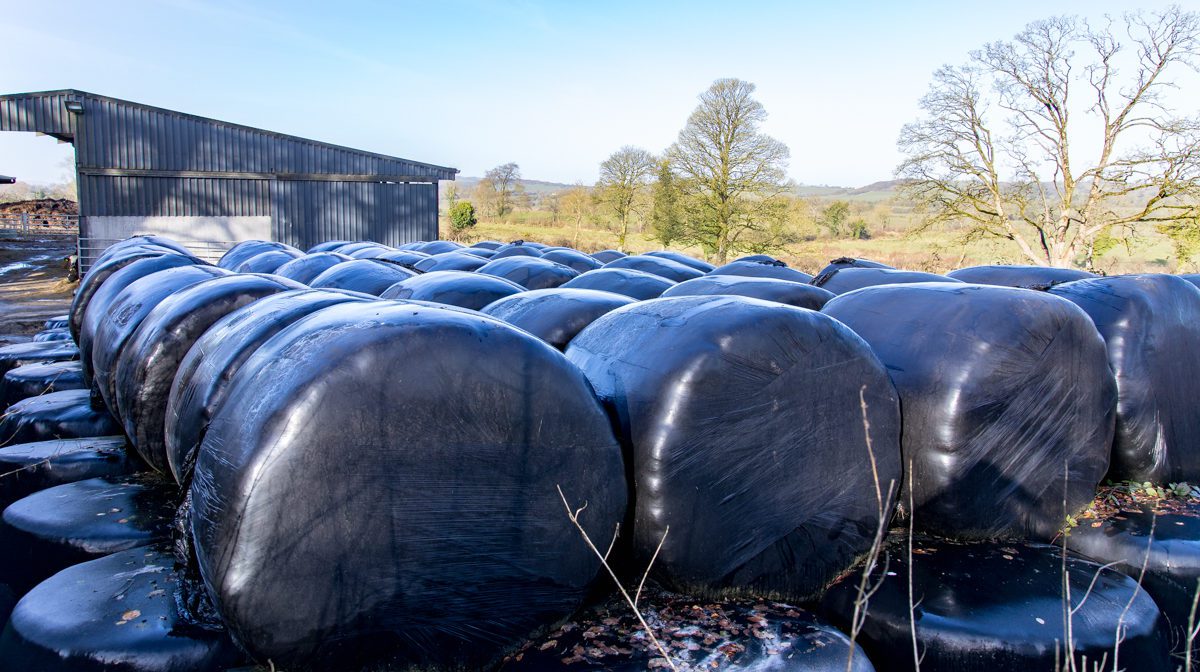From using calving cameras for CCTV, to creating physical barriers at gates, coming up with ways to prevent the theft of bales has become a necessity for many farmers.
And this extends to bale recovery too; solutions to tracking bales once they have been stolen can range from marking bales with a coloured dye in order to identify them once they have been taken, to putting GPS trackers inside the bales.
These may not be the most practical solutions, as the chances of recovering the bales would be slim, but prevention of the theft of bales is an important aspect of protecting your fodder.
According to the crime prevention executive of the Irish Farmers’ Association (IFA), Barry Carey, there should not be a shortage of bales. “The first cut for silage was pretty light this year, the second cut was very good,” he said.
But while many Irish farmers have harvested their fodder for the winter, there are farmers who have suffered losses to their harvest this year, whether through suspected criminal damage or through severe flooding.
Therefore, as farmers have paid for contractors to harvest their fodder, great care must now be taken to ensure they retain the maximum amount of feed for the winter.
Preventing bale theft
The biggest thing for farmers to do, Carey said, is where they have the bales, to “at least put a lock on the gate”.
Carey said that “proactive steps” are key to achieving solutions to theft prevention, and investing in, and using existing technology, is one such step.
“We’re all the time looking at modern and proactive devices. There are devices out there that will notify farmers on the opening of gates.
“If you’re getting a notification at 2:00a.m in the morning that there’s somebody in your yard, or there’s somebody in a field, that does the trick.
“You’re getting advanced notice on if there’s activity in the location, and farmers are very good at using modern technology, like getting an early warning device.”
Using existing technology on some farms is a further ‘proactive step’, as farmers that have lambing and calving cameras on their farms should use this equipment all year round by repurposing it.
“Farmers are very good at CCTV for lambing and for calving, and then that’s only for certain times of the year,” Carey added.
By “turning the CCTV into a proactive device” Carey said, this can be used to better monitor areas where the goods of farmers are being stored, including the storage of their bales.
“Whether its a sensor, or lighting in particular in and around outbuildings, sheds, and barns, ‘light up, lock up’. That’s a message we deliver all year long,” he said.
Protecting your fodder
Carey said: “We’re always telling farmers to be aware of burglary, from farm machinery, tools, but now there’s another side to it, out in the fields.”
If farmers are unable to immediately remove their fodder from the fields, as is often the case on Irish farms, preventing access to the field may be the only solution for farmers to protect their bales from theft.
Carey said: “You can come along with a JCB and create a mound behind a disused gate, or concrete blocks that you put in front of the gate.
“That’s it, they can never be opened, and you’ve reduced the risk of people using them and getting access to areas, including the theft of sheep and cattle.”
If bales are being left in isolated fields for a short period, farmers are encouraged to keep them far away from gates to make their theft more difficult.
However, the most practical solution to prevent the theft of bales is to remove them from the fields in which they were made, and securely store them away.
Carey said: “Get them out of the fields, get them into an area that is close to lighting, close to a secure area, and leave a physical barrier in front of the gate so they can’t come in.”
